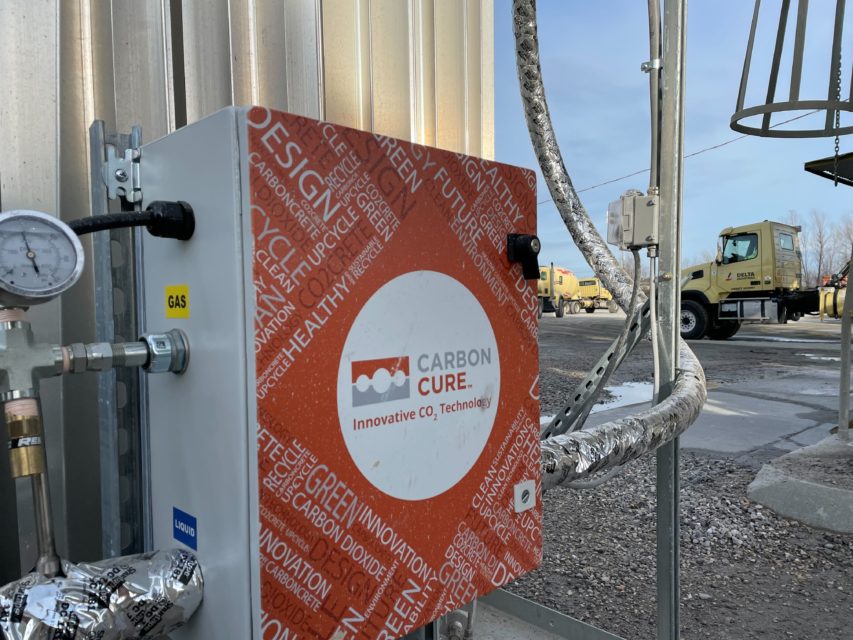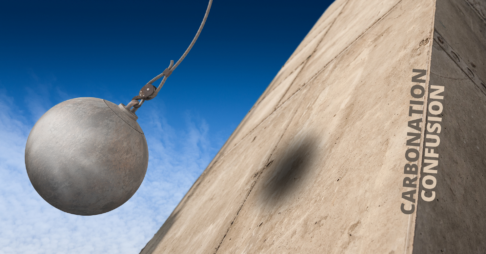Demand for Environmental Product Declarations (EPDs) has grown nearly 2,000% in the past year according to a recent Dodge Construction Network report. The new Inflation Reduction Act and the federal Buy Clean executive order will further accelerate this demand, as more emphasis is placed on sustainability and accountability for embodied carbon in construction.
In the past, architects, engineers, contractors, and other specifiers have been apprehensive about requiring EPDs for concrete and other construction materials, because EPDs weren’t widely available. The landscape has shifted, however, and EPDs are now an industry standard.
What is an EPD?
An Environmental Product Declaration, or EPD, is a report that quantifies the environmental impact of a building product.
EPDs were first created as a management tool used in LEED to ensure meaningful and transparent data on emissions was being used. EPDs are now widespread in construction — not just on LEED projects — as specifiers react to demand and more solutions become available to make the creation of EPDs accessible to all concrete producers.
EPDs for concrete are created when an EPD service provider conducts a life cycle assessment of a concrete plant and materials to communicate verifiable and accurate environmental information.
Architects, engineers, contractors, and property owners can then use EPDs to make informed decisions about the materials they select. Simply put, an EPD is an easy way to prove the carbon footprint of concrete mixes and products.

Government Support for EPDs
The federal Buy Clean executive order comes into effect on January 1, 2023. From that date, the General Services Administration (GSA) and other government purchasing agencies must obtain Type III EPDs for all building materials used on federal projects.
In addition to Buy Clean, the new Inflation Reduction Act includes a number of provisions that promote low carbon construction materials and encourage the use of EPDs including:
- $250 million for the Environmental Protection Agency (EPA) to enhance low embodied carbon construction materials standardization, primarily through EPD preparation and submittals, and assist producers and manufacturers to expand EPD use and validate declarations.
- $100 million for the EPA to work with the U.S. Department of Transportation (DOT) and the GSA on EPD uptake, driving specification of low carbon materials in building and infrastructure projects.
- $4.2 billion for GSA, DOT, and the Federal Emergency Management Agency (FEMA) to incentivize low carbon material use in federally funded projects.
This support for EPDs by the federal government will apply pressure to follow suit at the state level and in the private sector.

How Specifiers Can Utilize EPDs
Architects, engineers, and contractors are coming under increasing pressure to prove they are meeting the sustainability commitments laid out in Architecture2030, SE2050, etc. This includes better management of embodied carbon emissions. But how can you manage what you can’t measure?
Here are three ways specifiers can manage and measure embodied carbon on construction projects:
1. Require Type III EPDs
An industry average EPD is developed by an industry association (like the NRMCA) and declares the average product of multiple companies in a clearly defined sector and/or geographical area. You can view the industry average EPD for ready mix concrete here.
While Industry Average EPDs are useful as a benchmark for concrete EPDs, they don’t provide the most accurate account for embodied carbon.
Product-Specific Type III EPDs are the most thorough of all EPDs because, unlike industry average EPDs, Type III EPDs cover a single product from a manufacturer and they are reviewed by a third-party entity. You can think of them as EPDs that address one specific SKU.
Requiring Type III EPDs on concrete mixes and products will help you more accurately measure the embodied carbon content of the materials. And since EPDs are becoming more widespread, the chances are good that concrete producers in your area will already have them.

2. Permit/prefer the use of CO2 mineralization
To tackle the embodied carbon dilemma, specify the use of CO2 mineralization technologies like CarbonCure Ready Mix or CarbonCure Precast. Consider incorporating the following language into your master concrete specifications:
CO2 mineralized concrete is permitted (or preferred) where available, pending concrete performance criteria is met.
By including this non-committal, minimal-risk language, three major objectives are achieved:
- A commitment to embodied carbon solutions is clearly communicated across your supply chain.
- Concrete producers who believe their market won’t allow them to supply concrete made with optimized cement contents will be empowered to adopt those solutions.
- Hesitation by any stakeholder on a construction project to provide materials that don’t clearly meet the specification is mitigated.
What is CO₂ Mineralization Technology?
3. Create embodied carbon goals
Specifiers can create embodied carbon goals for their projects in a number of ways:
Place a cap on GWP
Global warming potential (GWP) is the measure of carbon dioxide emissions in an EPD report. It is the key metric to ensure you’re meeting the embodied carbon goals of your projects.
Specifiers can place a GWP cap in their specifications by mandating that no bids above a certain GWP will be accepted.
To determine a reasonable GWP cap for your specific project, you can use industry average EPDs and deduct 10% or 20% off the GWP to encourage the use of low carbon materials, technologies, and manufacturing processes. You can also use the EC3 tool to compare different EPDs from your area and come up with a reasonable GWP cap.
NOTE: GWP caps on concrete should be based on accurate information pertaining to the specific application and location. For example, it would be unfair to cap GWP based on a 3000 psi mix if the application will actually use a 6000 psi mix. Also, GWP data would vary widely from one region to another. Check the EC3 tool for comparables in your area.
Include bidding preferences for lowest GWP
Some states use bidding preferences to encourage low carbon innovation. For example, the proposed Low Embodied Carbon Concrete Leadership Act (LECCLA) would ensure concrete producers bidding on public projects in New York are ranked based on the GWP, in addition to price.
Producers with the lowest GWP score on their EPD would gain a 5% price discount on their bid price, potentially making their bid more competitive. For producers that use any carbon capture, utilization, or storage technology to manufacture their concrete, an additional 3% discount will be applied. This has the effect of strengthening sustainable concrete producers’ competitiveness.
To encourage the use of low carbon materials, technologies, and manufacturing processes, specifiers can apply similar bidding preferences on suppliers with the lowest GWP in a similar way on private sector projects.

Razing a Common Misunderstanding: Early-Age Carbonation vs. Atmospheric Carbonation in Concrete

